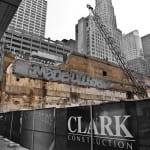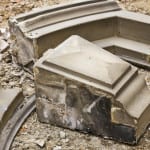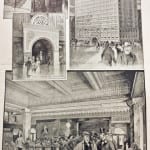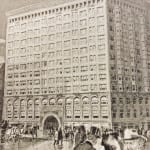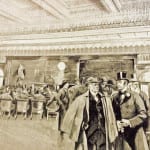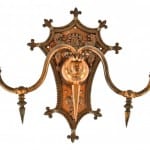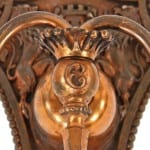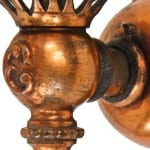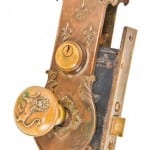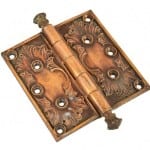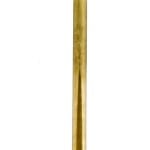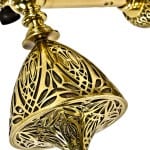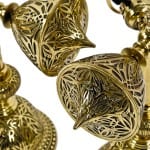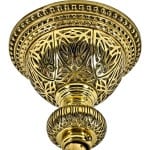bldg. 51 museum kicks off the new year with a remarkable acquisition: sullivan-designed chicago stock exchange trading room electroliers
This entry was posted on January 14 2016 by Eric
during the first week of january 2016, the bldg. 51 museum received an original and historically-important post-fire window keystone from a lake street loft building (osborne and adams, 1872). this was comprised of a seldom encountered material -- "artificial stone" -- which undoubtedly adds to its importance as rescued ornament from a post fire building. the significance of the acquisition is that artificial "cast" stone was used as a quick and cheap alternative to both limestone and sandstone (which was in high demand) shortly after chicago began rebuilding in the "burnt district." it only gained traction or popularity as a desirable building material after the fire, and its use fizzled out towards the end of the 19th century.
in an even more exciting turn of events, last week the museum picked up one of the most important acquisitions of the past year or so. this, in the form of three original and documented late 19th century ornamental cast brass electroliers, designed by louis h. sullivan for the chicago stock exchange building (1894). after conferring with cultural historian and expert tim samuelson, it seemed their origin in the chicago stock exchange was the leading notion, but the st. nicholas hotel, or the union trust building were plausible sites as well. there are no known photos of the original interiors of the latter buildings, making it somewhat of a mystery.
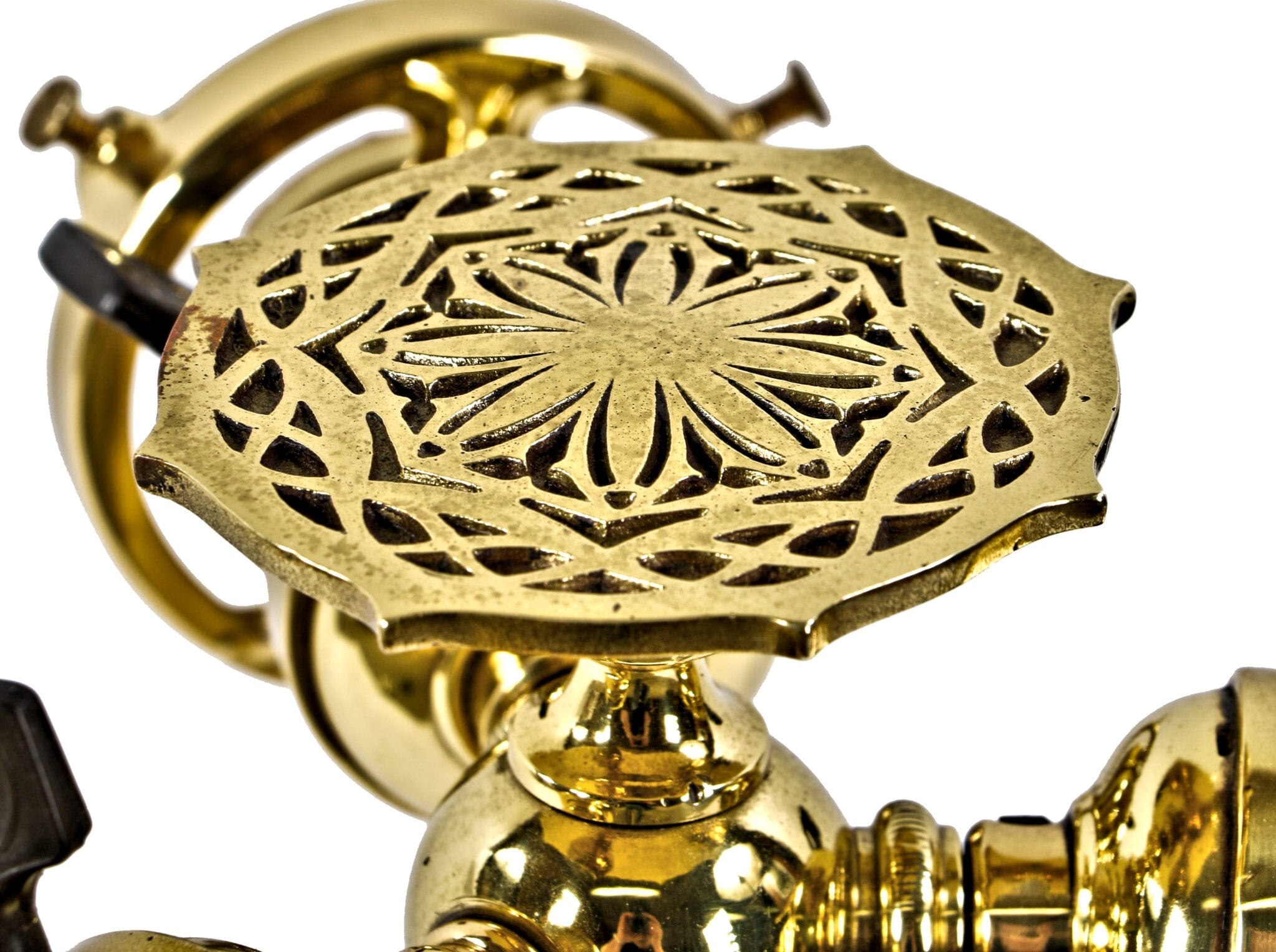
after further research, spearheaded by samuelson, it is confirmed that the late 19th century ornamented brass electroliers are indeed from the non-extant chicago stock exchange building (demolished in 1972). evidence for this was found in a winslow brothers catalog, and several images showing the double arm electrolier sconces installed in situ (in both corridors leading to the trading room and the trading room itself). we believe these matching sconces were removed from the west wood wall located under the trading room's balcony. similar sconces with triple arms were mounted on the upper columns below the gilded cast plaster capitals.
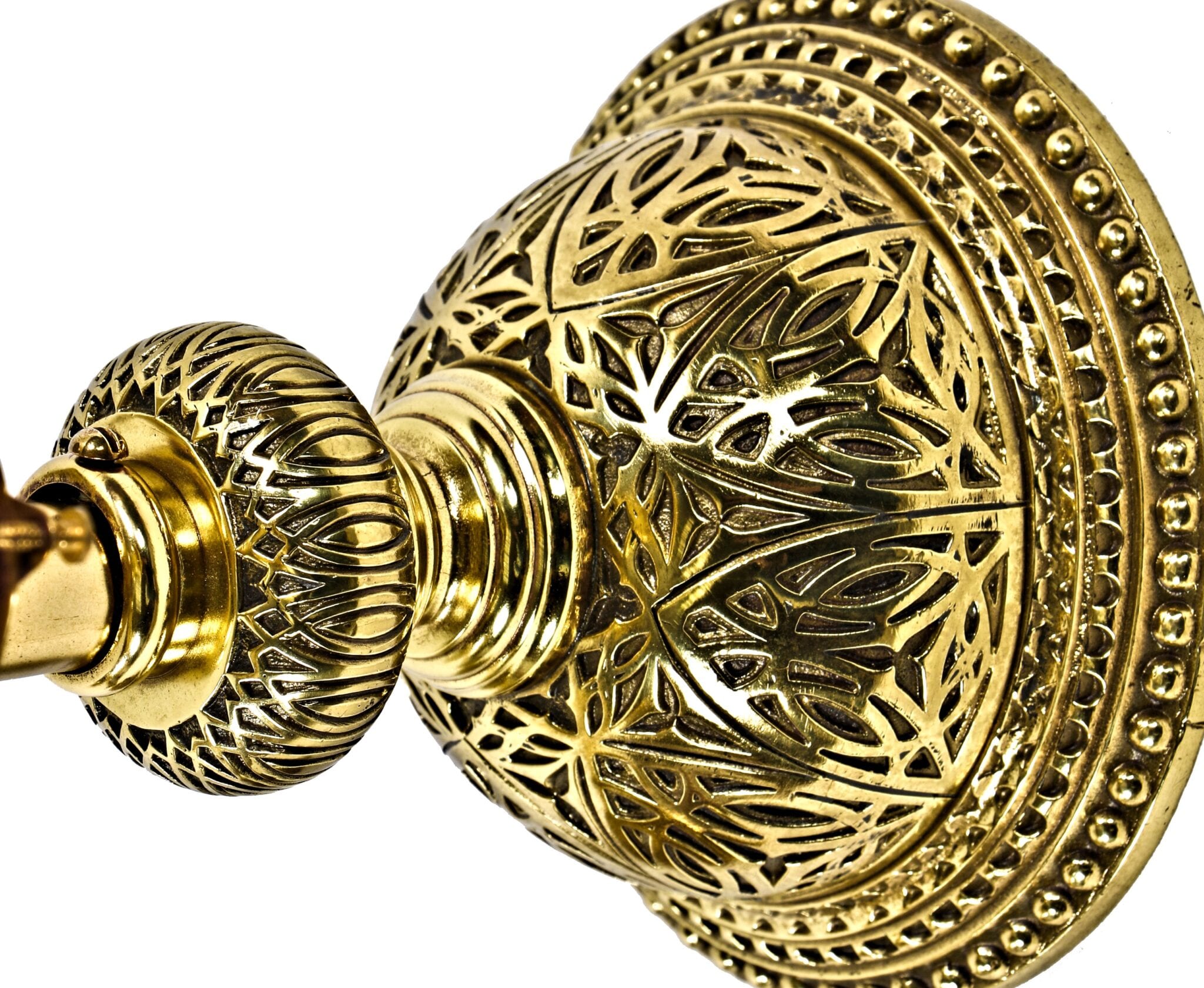
from what we know most of these fixtures were removed around 1908, when the stock exchange moved out of the building. the architectural firm of frost and granger were quickly brought on board to thoroughly renovate the trading room space in preparation for its new tenant, the foreman bank. sometime during the 1908 transition, an unidentified person with great foresight saved the fixtures from being scrapped or tossed out. for me, this is reminiscent of another unspoken hero -- a custodian at the columbus memorial building (which was, incidentally, constructed around the same time as the chicago stock exchange). in addition to saving the ornamental bronze hardware, the custodian managed to salvage around four matching double arm sconces with the original paddle shell sockets and virtually untouched oxidized copper-plated finish.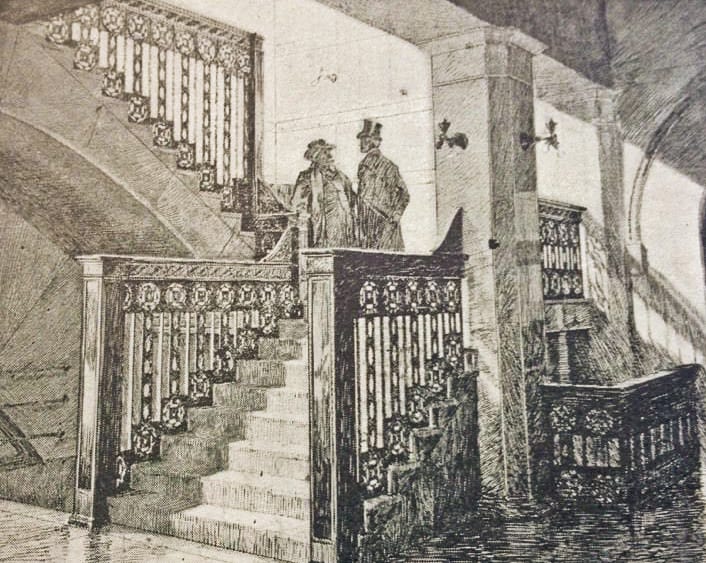
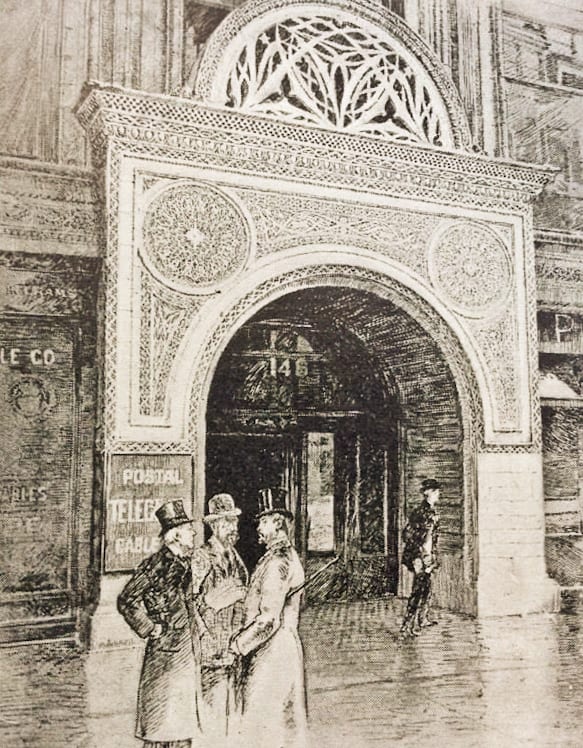
just when you think so much has been lost, both in terms of historic buildings and the artifacts used to embellish them, you discover instances like this one, in which artifacts are unexpectedly saved, to resurface or finally become recognized later on. it begs the question as to whether there are many more "lost" artifacts out there waiting to be identified and cared for. truly, the electroliers are a remarkable surprise, an important find that provides researchers insight into the stylistic elements used to outfit the stock exchange trading room.
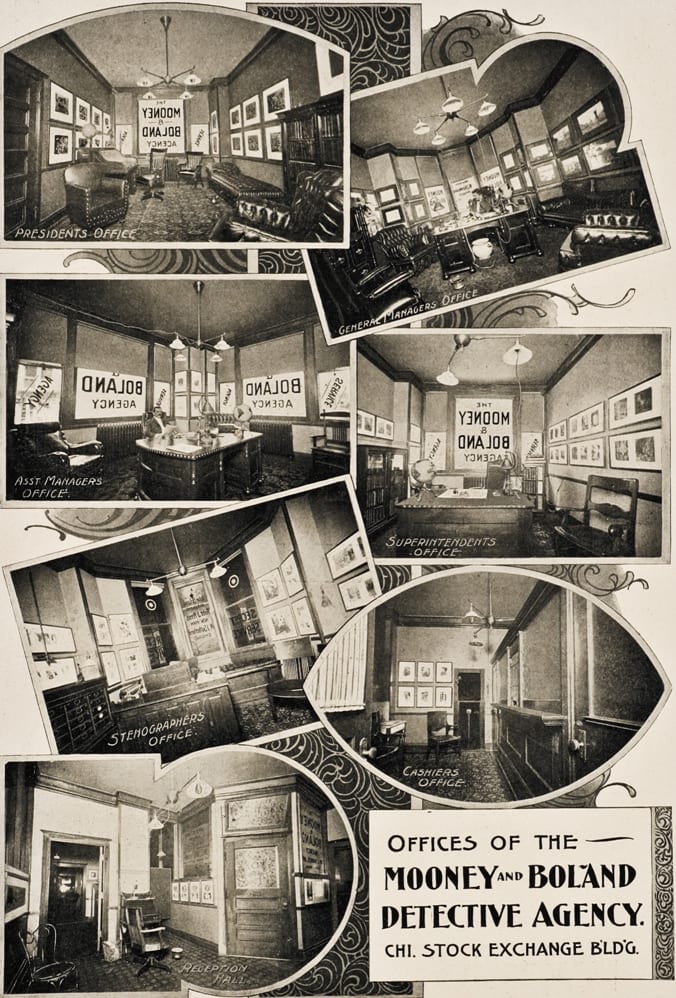
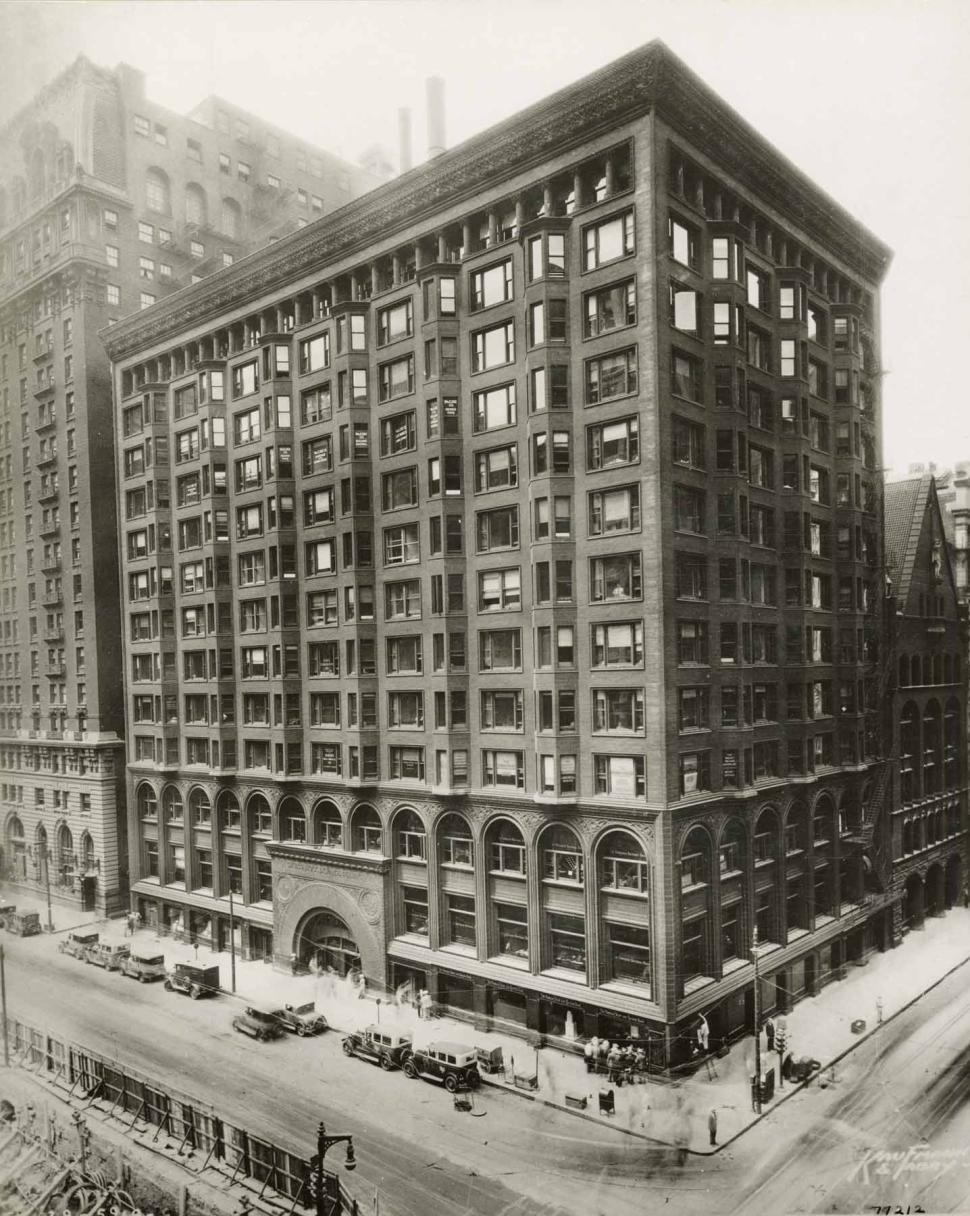
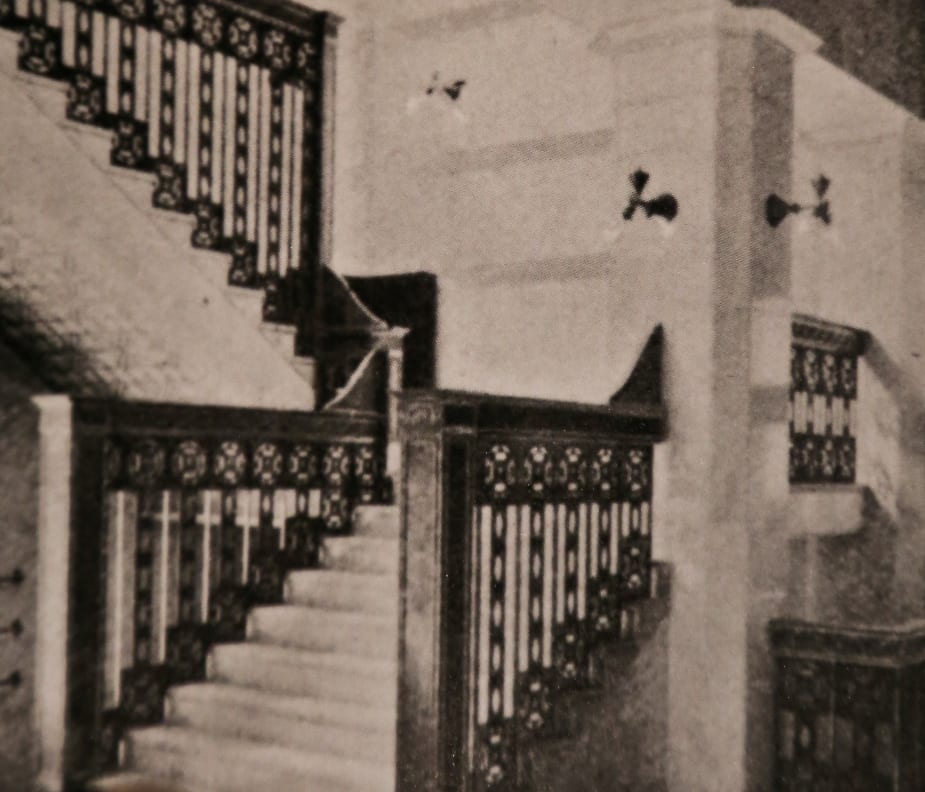
interior photograph of the chicago stock exchange with the electrolier sconces shown "in situ."
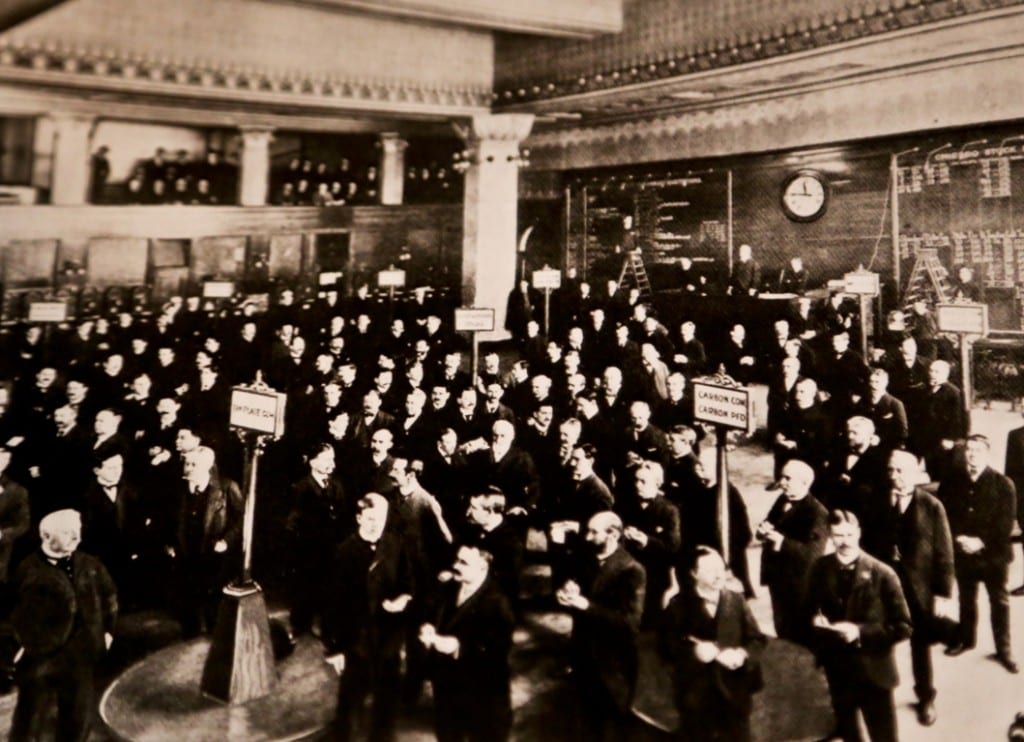
rare glimpse at the trading room interior take during the late 19th or early 20th century.
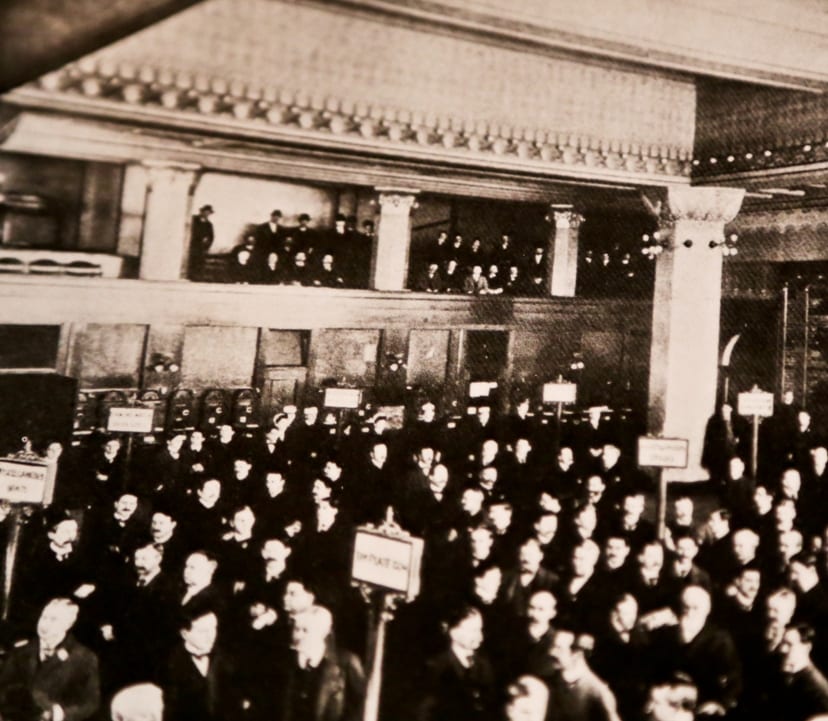
same photograph from above showing three double-light electroliers and/or sconces along the wall beneath the balcony. the shades were likely blue opalescent or vaseline-colored glass with ruffled edges. the two sconces acquired by the museum are believed to have been salvaged from the trading room.
This entry was posted in , Miscellaneous, Salvages, Bldg. 51, New Products, Events & Announcements, New Acquisitions, Featured Posts & Bldg. 51 Feed on January 14 2016 by Eric
WORDLWIDE SHIPPING
If required, please contact an Urban Remains sales associate.
NEW PRODUCTS DAILY
Check back daily as we are constantly adding new products.
PREMIUM SUPPORT
We're here to help answer any question. Contact us anytime!
SALES & PROMOTIONS
Join our newsletter to get the latest information

